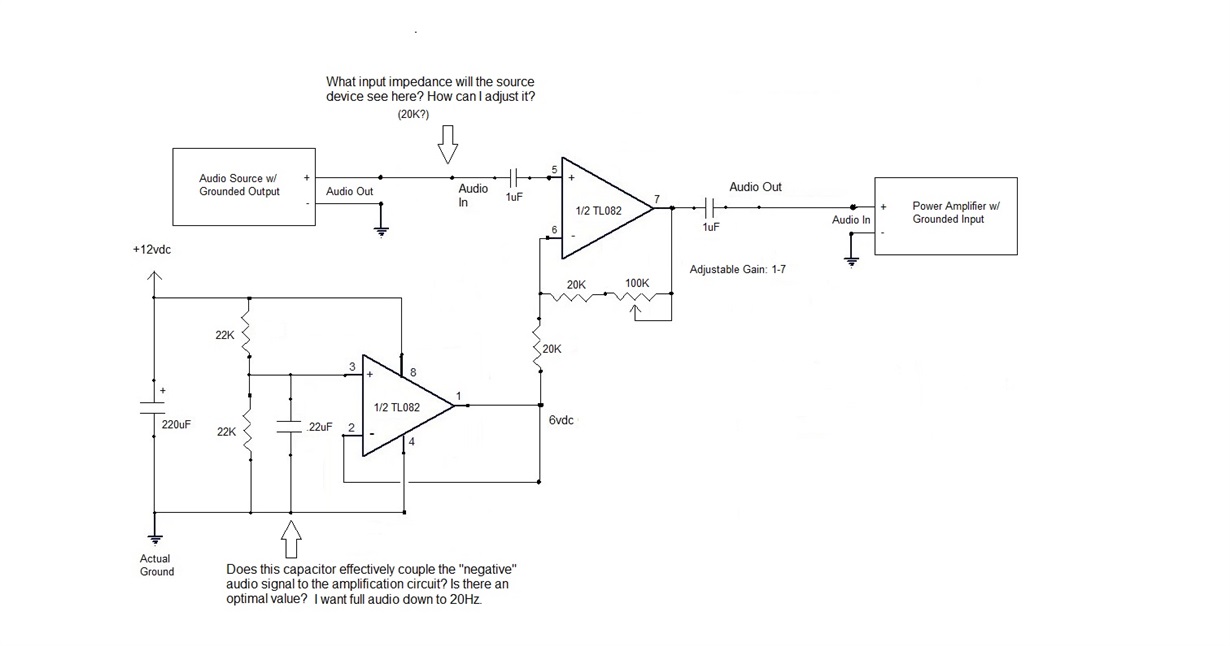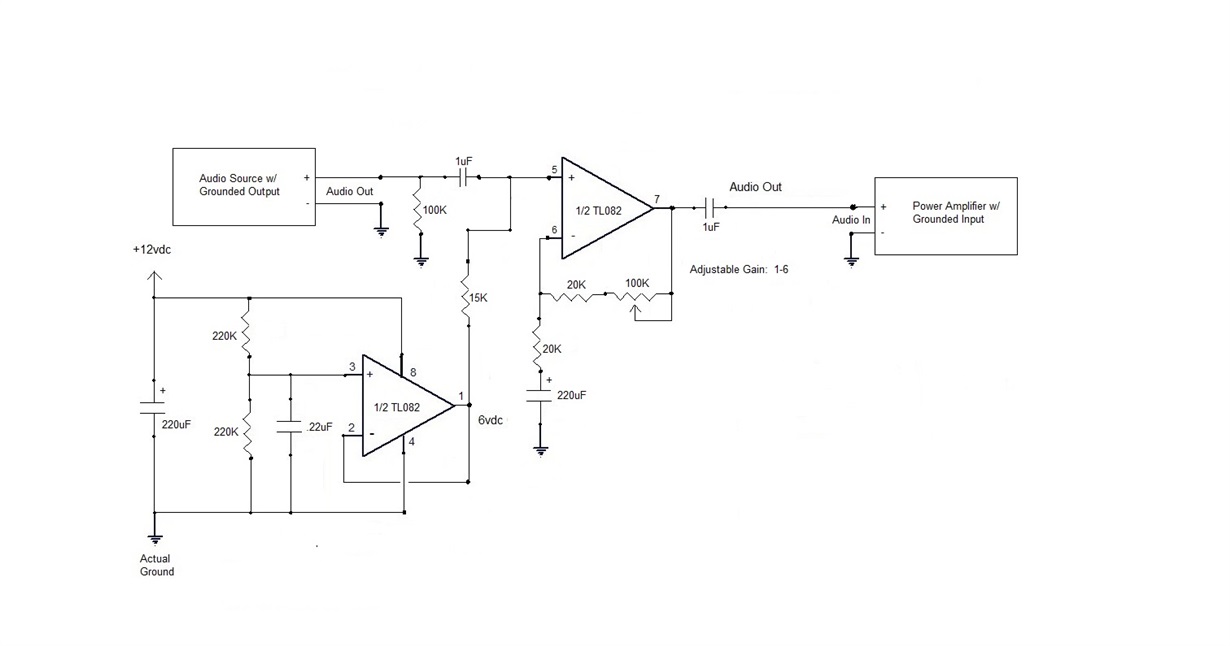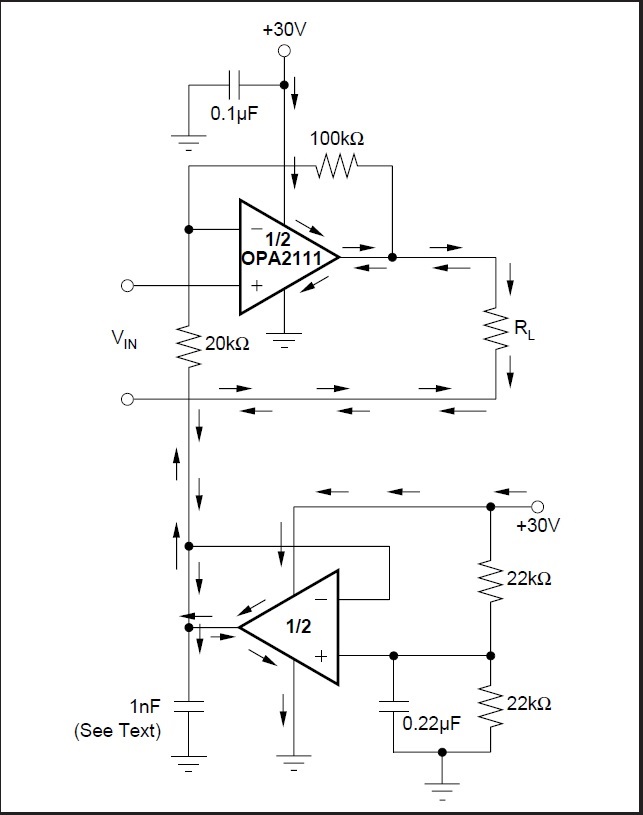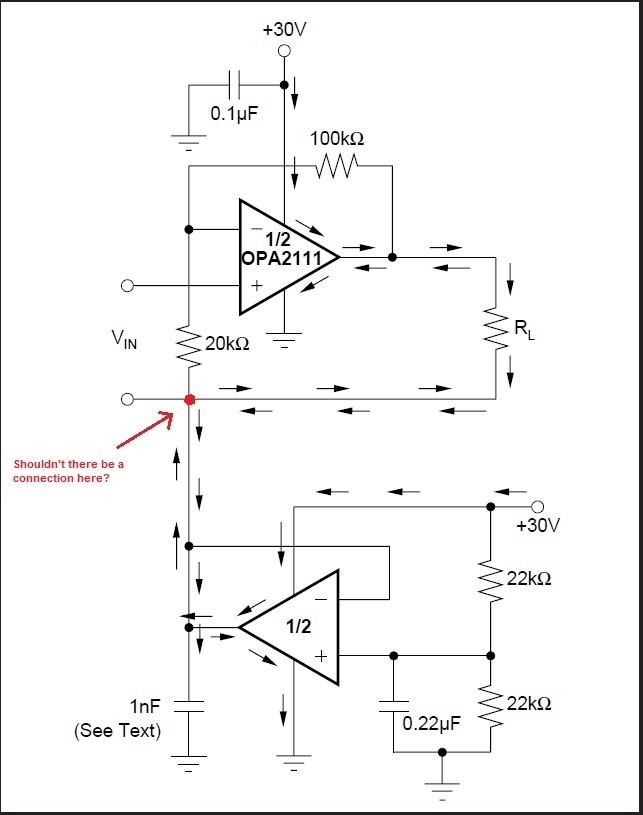Other Parts Discussed in Thread: TL082,
Hello! I am trying to design an adjustable gain audio pre-amp circuit that will be powered by a single source +12vdc for an automotive application. The audio input and output devices ground the "negative" side of their signal. I'm trying to figure out how to connect these devices to my circuit while preserving the floating ground needed to operate from a single supply. I am using half of the TL082 to establish the elevated floating ground and also AC coupling the real ground through this stage at unity to pass through to the second stage inverting input. I am not getting any output using the circuit shown below. What am I missing to make this work, and are there any other improvements I could make to this for better performance? Thank you!





